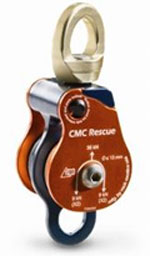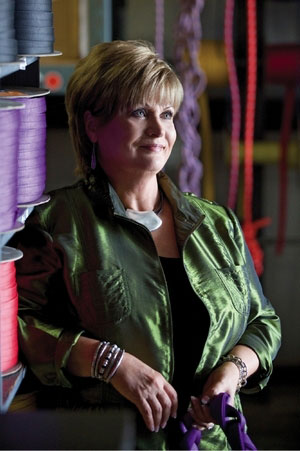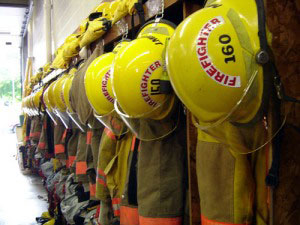 "If it's been a while since you've updated your rescue equipment kit or attended a rescue class, you may not be aware of some of the newer pieces of rescue gear that not only make your job safer, but make it easier and more efficient as well. The last decade has seen an explosion of emerging technologies that have allowed the design and manufacture of some really exciting and practical equipment. In the coming weeks, we will be reviewing some of the newer gear that you may not have had the opportunity to work with. Hopefully, this will provide the stimulus for you to get out there and find out what else you may be missing out on." Pat Furr, Roco Chief Instructor/Technical Consultant
"If it's been a while since you've updated your rescue equipment kit or attended a rescue class, you may not be aware of some of the newer pieces of rescue gear that not only make your job safer, but make it easier and more efficient as well. The last decade has seen an explosion of emerging technologies that have allowed the design and manufacture of some really exciting and practical equipment. In the coming weeks, we will be reviewing some of the newer gear that you may not have had the opportunity to work with. Hopefully, this will provide the stimulus for you to get out there and find out what else you may be missing out on." Pat Furr, Roco Chief Instructor/Technical Consultant
The Omni Block Swiveling Pulley
This first item is one of my personal favorites. There is a story behind it, but I will have to save that for a time when we may meet out in the field. The Omni-Block Swiveling Pulley, designed by Rock Thompson of Rock Exotica, combines some unique features that save time and weight while increasing the efficiency of virtually every type of pulley system. CMC's version of this pulley -the CMC Prusik-Minding Swivel Pulley- meets NFPA G rating.
 The feature of the Omni-Block that I think is as important as the built-in swivel is the "quick release side plate." This proprietary design allows the rope to be loaded andunloaded into the pulley without having to remove the pulley from the anchor. Depending on the application, this provides a new level of ease for systems incorporating temporary directional pulleys, and really reduces the chance that gear may be dropped. This is especially important for rescuers that are building systems while at height, such as with tower rescue operations.
The feature of the Omni-Block that I think is as important as the built-in swivel is the "quick release side plate." This proprietary design allows the rope to be loaded andunloaded into the pulley without having to remove the pulley from the anchor. Depending on the application, this provides a new level of ease for systems incorporating temporary directional pulleys, and really reduces the chance that gear may be dropped. This is especially important for rescuers that are building systems while at height, such as with tower rescue operations.The swivel feature has proven to be a huge improvement that eliminates the need for an additional separate swivel and additional carabiner, thus saving weight and expense. But the true benefit of the swivel, in addition to eliminating side-plate chaffing, is that any twists inadvertently built into an MA system practically spin out on their own once the system is loaded. For the rare occasions that twists do not spin out on their own, it's just a matter of quickly rotating the pulley manually to remove any twists.
Again, stay tuned, as we continue to review some of the newer pieces of rescue gear in the coming weeks.


 “It is our experience that the victims, would-be rescuers, and co-workers either fail to adhere to their emergency plans or simply do not have a plan in place, with catastrophic results... In the last year alone, we have responded to three confined space rescues.”- Battalion Chief Jack Wise of the Los Angeles Fire Department
“It is our experience that the victims, would-be rescuers, and co-workers either fail to adhere to their emergency plans or simply do not have a plan in place, with catastrophic results... In the last year alone, we have responded to three confined space rescues.”- Battalion Chief Jack Wise of the Los Angeles Fire Department Roco Rescue's president and CEO, Kay Goodwyn was recognized at the 2012 Influential Women in Business Awards yesterday. The annual event, sponsored by the Greater Baton Rouge Business Report, recognizes female business leaders who demonstrate exemplary business accomplishments and a dedication to their work, their communities, and the world.
Roco Rescue's president and CEO, Kay Goodwyn was recognized at the 2012 Influential Women in Business Awards yesterday. The annual event, sponsored by the Greater Baton Rouge Business Report, recognizes female business leaders who demonstrate exemplary business accomplishments and a dedication to their work, their communities, and the world.  Here at Roco, we have recently discovered a minor issue when the SKED stretcher is updated with Cobra buckles. The Cobra buckle replacement system is attached by girth-hitching the components into the grommets. The girth hitch takes up more room in the grommets than the sewn loop that was previously used. This makes it more difficult to pass the vertical bridle rope through the grommet holes that we’re accustomed to using.
Here at Roco, we have recently discovered a minor issue when the SKED stretcher is updated with Cobra buckles. The Cobra buckle replacement system is attached by girth-hitching the components into the grommets. The girth hitch takes up more room in the grommets than the sewn loop that was previously used. This makes it more difficult to pass the vertical bridle rope through the grommet holes that we’re accustomed to using. A study on the “reliance of municipal fire departments for confined space response” has been funded by a legal settlement following the deaths of two workers in a confined space incident in California.Research by the University of California, Berkeley, indicates that employers may be relying too heavily on local fire departments for confined space rescue.
A study on the “reliance of municipal fire departments for confined space response” has been funded by a legal settlement following the deaths of two workers in a confined space incident in California.Research by the University of California, Berkeley, indicates that employers may be relying too heavily on local fire departments for confined space rescue.


